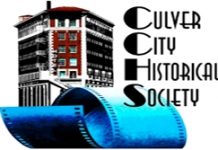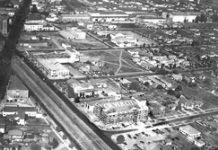Culver City’s 95th anniversary of incorporation was Sept. 20. This land of peaceful hunters and gatherers—later known as Gabrielinos—transitioned to Spanish and then Mexican control, only to become a part of the State of California in 1850.
The influx of people (yes they were immigrants, and that was not a naughty word), populated this state which is currently the 8th largest economy in the world.
A young Nebraska-born Harry H. Culver arrived in this area in 1910, and from his astute observations, Culver planned a balanced city, a place for families to settle, with an economic base to support them.
The railroad tracks were already here, major streets in place, and the land offered a view corridor from the growing pueblo of Los Angeles to Abbot Kinney’s resort of Venice— just ripe for development. The climate was temperate with a creek flowing through La Ballona Valley.
Enter filmmaker Thomas Ince in 1915, a stage actor who transitioned to movie mogul, and with urging from Harry Culver, became the man who built two of the three major movie studios in Culver City.
Both remain historic working studios (Sony Pictures, and The Culver Studios). Hal Roach also established his “Laugh Factory to the World” in this “Heart of Screenland.” Roach, with their location shots, recorded Culver City’s early history on film….
Culver City was built around a little Main Street, encouraging historic buildings like Culver’s six-story hotel, the Citizen and Washington buildings. The city survived the Great Depression, and children were lucky to grow up in neighborhoods with schools and parks, with a keen ear for the whistle of the Helms coaches.
As nightclubs became less prevalent, industry emerged with the dawn of the industrial Hayden Tract, established in the mid 1940s. The railroad tracks that served industry there, has just become the path of our new EXPO line.
Culver City became a charter city in 1947, followed by a move to become a unified school district in 1949. Culver Center, a post WWII development, became the second shopping area. During the 1950s, Fiesta La Ballona celebrated local history and heritage, and car dealerships provided major sources of revenue.
Redevelopment began in 1971, with the first major project, a mall, in Fox Hills. And despite the state pulling the rug out from local agencies this year, Culver City has accomplished much, and will continue to do so.
Culver City, through a series of more than 40 annexations grew from 1.2 to just short of five square miles, is well known around the country, and beyond.
With our own city government, school district, police and fire departments, Culver City become what some call “an Oasis within the urban metropolis.” And, as Harry Culver advertised early on is still true–“All Roads Lead to Culver City.”
Julie Lugo Cerra, author and City Historian













